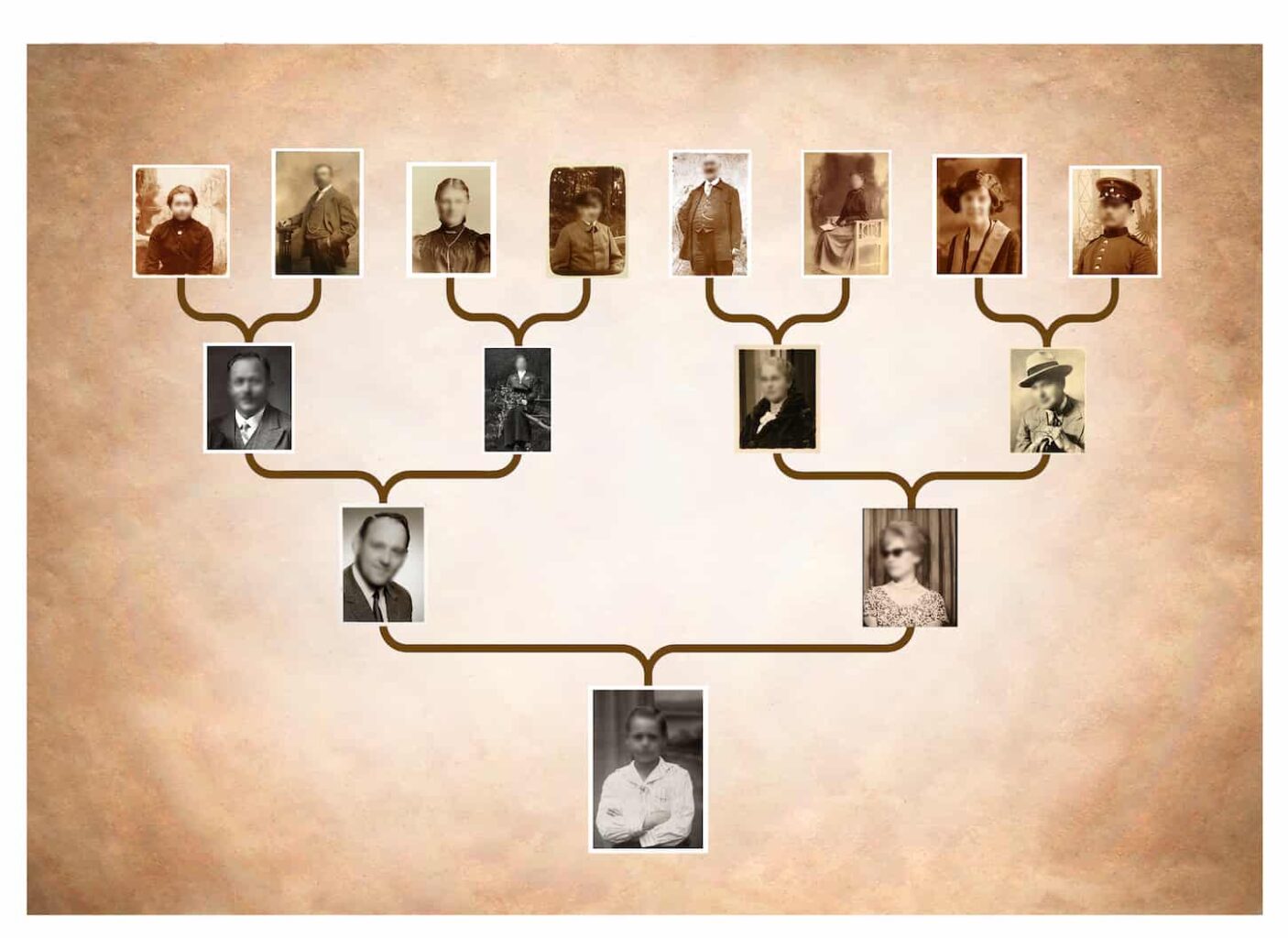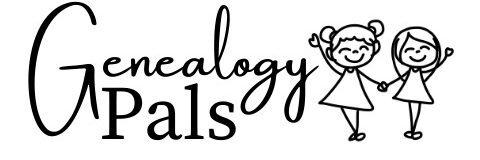As I do my genealogy, things get crazy fast when you’re from a yours-mine-and-ours type of family. Especially when you’ve got two brothers (one from another mother) with the same first name. The family tree gets complicated quickly. But do I leave someone out just to simplify? Who should you include in your family tree?
A full family tree should include everyone important to and include in the family, whether they are full-blood relations or not. Decorative family trees may only highlight a few, specific family members and usually skips displaying dates to fit a particular design aesthetic.
Ready to learn more about who to include in your family tree in specific situations? Keep reading – and we’ll talk about what to do when!

Who to Include in Your Family Tree
Who you should include in your family tree is really going to depend on the type of family tree. Why? Well, it’s because space is the limiting factor here.
- Paper-based, displayed family trees only have so much space. So you have to be very strategic in the story told about your family. You’ll have to choose which names and dates to showcase.
- Decorative family trees usually have even less space. Not everyone or every date will be able to be listed. Decorative trees usually showcase a particular part or branch of a family tree.
- Software or online-based family trees don’t have that space constraint, so you can include absolutely everyone who’s important to your family.
The only exception about who to include in your family tree might be that you need to exclude your four-legged fur baby from the genealogical chart. I haven’t tried adding our pets to the genealogy software yet, but Breanne says it might be possible via the “custom facts” or “miscellaneous” facts. The software won’t list them as biological or actual children, though.
But no matter which type of family tree you’re doing, make sure you include everyone who’s important to the story of your family. And make sure you include everyone in the software – where there isn’t the same space restraint of paper-based family trees.
Because what we’re doing with our family trees is creating and telling the stories of our lives, the lives of our family members, and the stories of our ancestors. Relationships are key to those stories!
So take advantage of the countless relationship options offered by genealogy software. Or, if the right relationship option isn’t available? Make a custom fact so you can add in that adopted cousin who used to come over every summer.
Find a way to include everyone who’s important to your family and your family’s story.
Who to Include on a Decorative Family Tree
If you’re going to be making (or commissioning) a decorative family tree, you need to decide how big it is and who’s going to be included.
You could choose to showcase:
- Two sets of grandparents, the parents, any children, and a few important dates;
- Four sets of great-grandparents, two sets of grandparents, the parents, and all of the children;
- The genealogy of your fur babies;
- Whatever else you want!
Your main constraint is going to be the size of paper you’re using – and if you’re handwriting things or using a printer. Feel free to get creative, though. There are a ton of amazing design ideas on Pinterest and Etsy.
Who to Include on a Software-Based Family Tree
Again, make sure that you’re including everyone who’s important to your family in the genealogy software program of your choice. The only space constraint is if you’ve got a program that saves on your hard drive (and then you’re limited by your hard drive size) or if you have a cloud-based software file limit.
But if you’re using FamilySearch.org? There isn’t a limit to how large you make your family tree. It can keep growing – and it’s a totally free program. The only file limits are in how large a photograph or other file format that you can upload. And even then, it lets you upload almost anything that’s family related.
So seriously – include everyone important to your family on your online tree. I’ve got both brothers and their respective, different parents – because those people are important to my brothers – and so they’re part of my family even if we don’t share DNA.
Do You Put Step-Parents on a Family Tree?
You should definitely record any and all marriages, divorces, or other life-changing events for the people in your family tree. So definitely include step-parents – even if it was a temporary step-parent situation.
That way, you can record the entire story of your family – including however many marriages (or remarriages) a particular family member has.
If your step-parent has children, you may also want to include those step-siblings in your family tree. This is especially true if you develop a close bond with your adopted siblings.
On a personal note, I’m not a fan of the nomenclature of “step-” and “half-“, even if they are accurate for genealogical and record-keeping purposes. I may not share the same parents as my brothers and one sister, but they aren’t half-siblings or step-siblings in my vocabulary. They’re just brothers and sisters – or siblings.
How Do You Represent a Family Tree?
Asking how you represent your family tree is almost like asking which tree is best. There are so many options – and each (family) tree has different strengths and weaknesses. Some family trees work better for some situations, while another display style will work much better in other scenarios.
Even so, here are a few of the family tree display styles you can use.
- Basic pedigree moving backward (it gets bigger as it goes back in time).
- Basic pedigree moving forward (it gets bigger to showcase descendants from one couple). This is also called a descendancy chart.
- Fan view style pedigree charts move out from a particular person, letting you get more people into a smaller space.
- Family group sheets can show you everyone in an immediate family unit (parents and children).
- A dual-sided family tree culminating in a particular marriage, which is usually shown in the front and center of the family tree. Children (or a particular child) could also be the middle, featured family members in this style of a family tree.
- Whatever else you can design or find!
Family trees can be as simple, fancy, decorative, complex, informative, or whatever other adjectives you want to use. Make sure you read our post about what pedigree charts are for more information.
What is the Best Way to Trace Your Family Tree?
If you’re looking at a family tree, the best way to trace it is to start learning about where you and your family fit on the tree. Then, start learning about the people around you and move around the chart.
If you don’t have a family tree and you want to create or trace your family through time, then it’s important to start doing your own genealogy.
- Start by asking family members about the family. See what and who they know and remember.
- Then, take those names and dates and plug them into a free program (we recommend FamilySearch.org as the best, free starting place) to see what’s already out there in the genealogical sandbox.
- Connect to more family – and start creating your own family tree.
- Consider a DNA test to find out more about your family, your ethnicity, and where your family comes from – and to find living relatives who can help you fill in gaps in your family tree.
This is just the bare basics of how to get started. But don’t worry. We go into a ton more detail on how to get started doing genealogy in this article here. So go read that next – and get going on learning and preserving your family’s story.
Final Thoughts
Family trees are an amazing, wonderful thing. They’re really cool to look at. They help you learn the story of your family, which can help you better develop your sense of self and family.
And knowing that your family experiences both good and hard times – but that they come through it together? That’s the key to developing resilience – and you can read more about that and other reasons why people do genealogy right here. It’s pretty awesome, don’t you think? We do!
Related Questions
How Do Family Trees Work with Cousins? Cousins aren’t traditionally included in a published or displayed family tree. However, they can definitely be included in any online or software-based genealogy trees. Be sure to read our article on cousins and family trees for more details.
Can You Celebrate Family History at a Family Reunion? Family history can be a great way to add interest and fun to a family reunion, provided it’s added in the right way. For 21+ ideas on how to do just that, read our article on how to celebrate family history at a reunion (without making people bored out of their minds).
What is the Safest Way to Store Family Records? Storing family records safely is important to prevent damage and decay. The best way to store them is in an archive-quality storage container, though the exact type of container will vary depending on the record in question. For exact details on which way to store specific documents, be sure to read our article on the safe storage of family documents.
